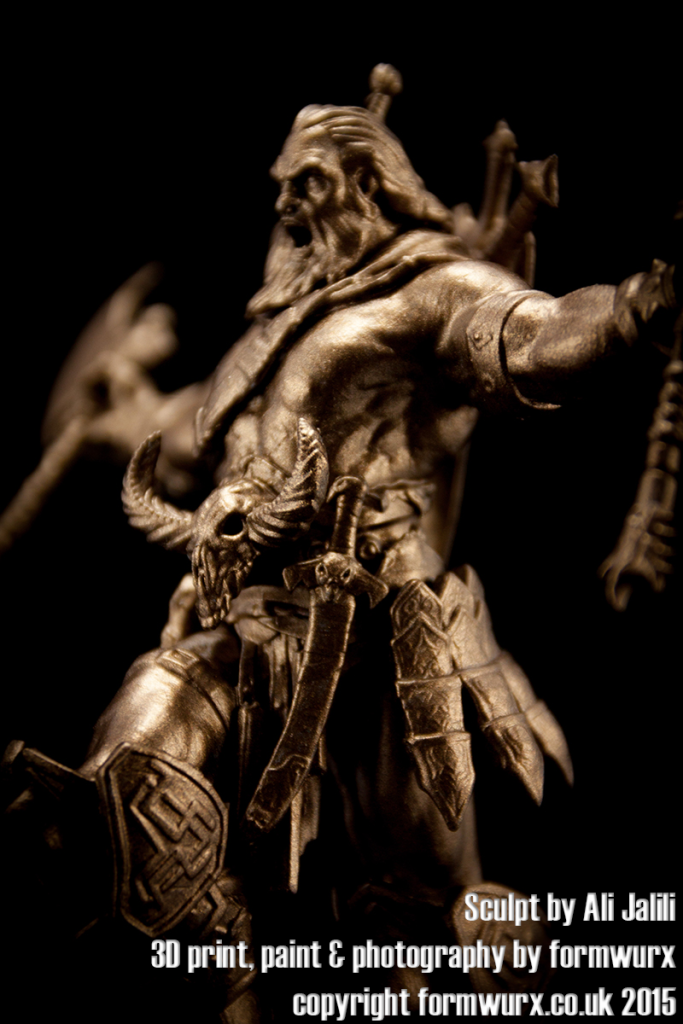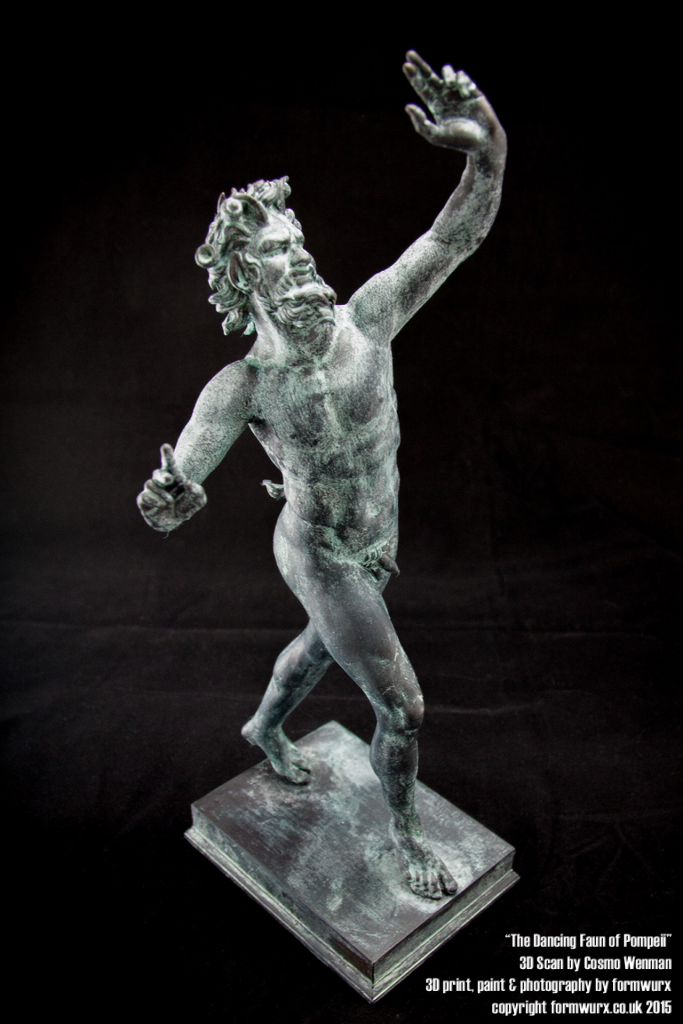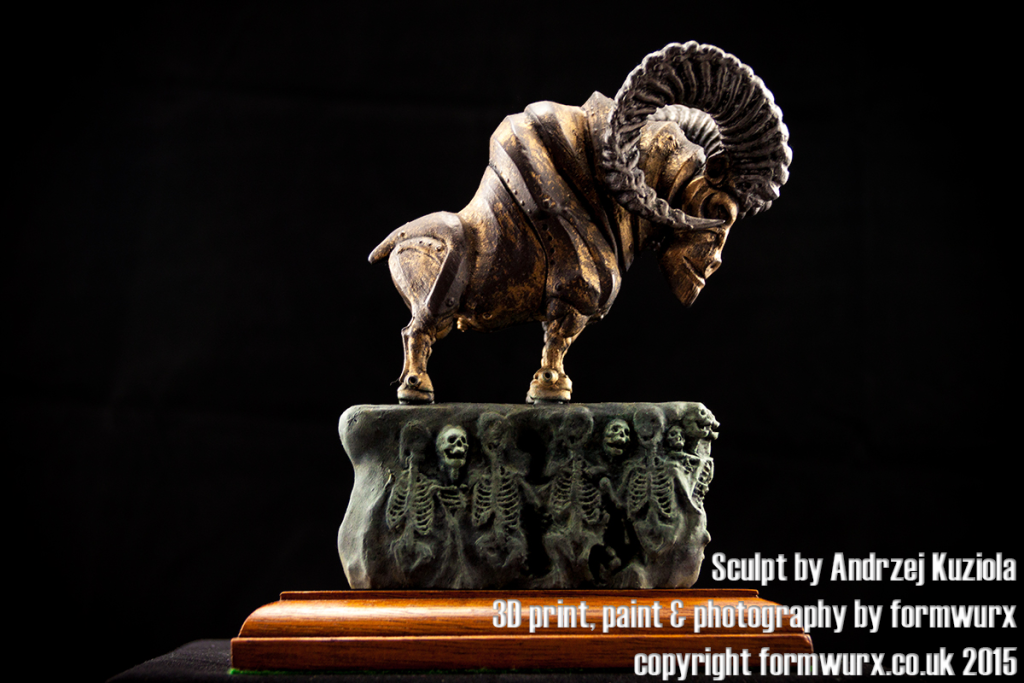 An artist can simply never have enough goodies to work with. Whether holding a paint palette or heading to the more industrial workshop, it’s a lucky creator indeed who has the enviable treasure trove of supplies and serious tools.
An artist can simply never have enough goodies to work with. Whether holding a paint palette or heading to the more industrial workshop, it’s a lucky creator indeed who has the enviable treasure trove of supplies and serious tools.
From paintings to sculptures, whether simple or multi-media, often a piece of art starts in one form and is taken to another level. Throughout history, we’ve seen artists make so many unexpected works, and much like scientists, it’s as if their calling is to create new things out of thin air, working to continually fill us with awe–and inspiration.
3D printing has lent not just another tool to the artist but as just one simple machine has also opened a whole new universe of digital options, materials, and forms. In exploring this phenomenon, Jason Spiller was able to elevate the work of a number of new artists, as well as beginning to work on a brand for his UK 3D printing service bureau, Formwurx, based in rural Northumberland. We’ve previously seen his incredibly detailed 3D print of Batman, and he’s got plenty more to show.
Using his Form1+ 3D printer to fabricate multi-part prints, Spiller was able to re-create complex–and definitely intense–works from fellow artists, choosing pieces that mean something to him. For instance, the reproduction of Cthulhu, which was an original sculpture made by Tom Isaksen of Characterink, reminds Spiller of the great fondness he had for playing the RPG Call of Cthulhu while in college. He is also, not surprisingly, a big fan of Lovecraft, who is responsible for the inception of the cosmic character.
 Spiller also features in 3D print:
Spiller also features in 3D print:
- Diablo III fan art, featuring a barbarian character by Iranian artist Ali Jalili.
- A mechanical goat called ‘Goatlord,’ by Andrzje Kuziola who is based in Edinburgh, Scotland. Spiller is also currently in the process of converting it into a jewelry box.
- The ‘Dancing Faun of Pompeii,’ by Cosmo Wenman and available for free download at Thingiverse – made as a wedding present for one of Spiller’s friends, who has an interest in Roman and Greek history.
Each of these 3D prints were first modeled in 3DS Max and ZBrush by the artists.
“I mainly used Zbrush to break all of the models up, using Dynamesh, masking, and decimation,” Spiller told 3DPrint.com.
Each piece was quite simply too large to produce as a single print. While most projects were printed at 0.05mm, the Cthulhu piece was printed at 0.025mm. Spiller was able to complete each 3D printed work with very little finishing, although he did have to perform some sanding near the areas where the supports had been removed.
“When I glue the sections together I use either super glue or a two-part epoxy (depending on how large the contact area is). A technique which I picked up from the Formlabs forums, and which works really well for seamless joins, is to brush on resin (capillary action draws the resin into the join) and use a laser pen to cure the resin, with a little light sanding,” said Spiller. “Once painted, you would never know the print was made from several sections.”
Overall, Spiller works to avoid sanding his 3D prints, but says that he relies on resin. Brushing on several layers, he uses Solarez clear resin which is then cured either with his laser pen or in the UV sterilizing chamber.
“I airbrush all of my models with several base coats of Vallejo acrylic white primer, mixed with Golden transparent airbrush extender,” says Spiller. “I then use a combination of acrylic paints, inks, and specialist metallic paints such as metal effects bronze with a blue patina aging solution and Rub’n buff silver and gold–another tip from the Formwurx forums.”
Spiller and the Formwurx team are specialists in producing a variety of 3D prints for individuals and businesses, with the majority of their projects being product prototypes for mass production, but offered more affordably.
Spiller’s main goal at Formwurx is to concentrate on 3D printed art, as it is what he finds most rewarding, although he enjoys all the other projects customers bring to them as well. Currently, the business is working on attaining a 3D scanner for scanning and reproducing art, as well as endeavoring to becoming involved in digital archiving of 3D files like historical homes, to add to the portfolio of the business and strike a good balance with the other artwork they produce.
Discuss this story in the Formwurx forum thread on 3DPB.com.
Subscribe to Our Email Newsletter
Stay up-to-date on all the latest news from the 3D printing industry and receive information and offers from third party vendors.
Print Services
Upload your 3D Models and get them printed quickly and efficiently.
You May Also Like
The Market and Industry Potential of Multi-Material 3D and 4D Printing in Additive Electronics
Additive manufacturing leverages computer-based software to create components for products by depositing either dielectric or conductive materials, layer by layer, into different geometric shapes. Since its birth in the 1980s,...
3DPOD 262: Bio-inspired Design for AM with Dhruv Bhate, Arizona State University
Dhruv Bhate is an associate professor at Arizona State University. There, he looks at structures, materials, and design. Previously, he worked at PADT as well as in the semiconductor and...
3DPOD 261: Tooling and Cooling for AM with Jason Murphy, NXC MFG
Jason Murphy´s NXC MFG (Next Chapter Manufacturing) is not a generalist service; instead, the company specializes in making tooling. Using LPBF and binder jet, the company produces some of the...
3DPOD 260: John Hart on VulcanForms, MIT, Desktop Metal and More
John Hart is a Professor at MIT; he´s also the director of the Laboratory for Manufacturing and Productivity as well as the director of the Center for Advanced Production Technologies....




































